Hybrid-Mechanism Distributed Sensing Using Forward Transmission and Optical Frequency-Domain Reflectometry
Abstract
Highlights
- This is the first study to combine forward transmission distributed sensing and optical frequency-domain reflectometry.
- A balanced system can be established to provide a middle point between the advantages of the two technologies.
- The hybrid system bridges a critical gap in distributed fiber-optic sensing and can offer new insights into possible hybrid systems, making it suitable for the combined measurement of dynamic (e.g., gas leakage, pipeline excavation warning) and quasi-static (e.g., pipeline displacement) events in long-distance applications.
Abstract
1. Introduction
2. Experiment Design
3. Experimental Results
3.1. Demodulation Performance Analysis of the NSR Method
3.2. FTDVS Module: Long Distance and Dynamic Measurements
3.3. OFDR Module: Low-Frequency Measurements
3.4. Frequency-Dependent Positioning Performance
3.5. Long-Range Position Capability of the Hybrid System
4. Conclusions
Author Contributions
Funding
Data Availability Statement
Conflicts of Interest
Appendix A
Appendix A.1. The Process of Deriving Signal-to-Noise Ratio from Zero-Lag NCC
Appendix A.2. The Process of Deriving the Signal-to-Noise Ratio from RMSE
References
- Westbrook, P.S.; Kremp, T.; Feder, K.S.; Ko, W.; Monberg, E.M.; Wu, H.; Simoff, D.A.; Taunay, T.F.; Ortiz, R.M. Continuous multicore optical fiber grating arrays for distributed sensing applications. J. Light. Technol. 2017, 35, 1248–1252. [Google Scholar] [CrossRef]
- Barrias, A.; Casas, J.R.; Villalba, S. A review of distributed optical fiber sensors for civil engineering applications. Sensors 2016, 16, 748. [Google Scholar] [CrossRef] [PubMed]
- Lu, B.; Pan, Z.; Wang, Z.; Zheng, H.; Ye, Q.; Qu, R.; Cai, H. High spatial resolution phase-sensitive optical time domain reflectometer with a frequency-swept pulse. Opt. Lett. 2017, 42, 391–394. [Google Scholar] [CrossRef]
- Liu, K.; Ma, P.; Jiang, J.; Li, P.; Zhang, L.; Liu, T. An S-transform-based positioning method for asymmetric interferometer disturbance sensors. J. Light. Technol. 2019, 37, 3201–3207. [Google Scholar] [CrossRef]
- Cui, J.; Zhao, S.; Yang, D.; Ding, Z. Investigation of the interpolation method to improve the distributed strain measurement accuracy in optical frequency domain reflectometry systems. Appl. Opt. 2018, 57, 1424–1431. [Google Scholar] [CrossRef]
- Li, H.; Liu, Q.; Chen, D.; Deng, Y.; He, Z. High-spatial-resolution fiber-optic distributed acoustic sensor based on Φ-OFDR with enhanced crosstalk suppression. Opt. Lett. 2020, 45, 563–566. [Google Scholar] [CrossRef]
- Mecozzi, A. Sensing with submarine optical cables. APL Photonics 2024, 9, 070902. [Google Scholar] [CrossRef]
- Donadello, S.; Clivati, C.; Govoni, A.; Margheriti, L.; Vassallo, M.; Brenda, D.; Hovsepyan, M.; Bertacco, E.K.; Concas, R.; Levi, F. Seismic monitoring using the telecom fiber network. Commun. Earth Environ. 2024, 5, 178. [Google Scholar] [CrossRef]
- Boffi, P.; Brunero, M.; Fasano, M.; Madaschi, A.; Morosi, J.; Gatto, A.; Ferrario, M. Real-time surveillance of rail integrity by the deployed telecom fiber infrastructure. IEEE Sens. J. 2023, 23, 26012–26021. [Google Scholar] [CrossRef]
- Huang, J.; Chen, Y.; Xiao, Q.; Jia, B. A Novel Sagnac Distributed Optical Fiber Vibration Sensor Based on Time Delay Estimation Algorithm; Optics Frontiers Online 2020: Distributed Optical Fiber Sensing Technology and Applications, 2021; SPIE: Bellingham, WA, USA, 2021; pp. 24–28. [Google Scholar]
- Huang, J.; Chen, Y.; Peng, H.; Zhou, P.; Song, Q.; Huang, P.; Xiao, Q.; Jia, B. A 150 km distributed fiber-optic disturbance location sensor with no relay based on the dual-Sagnac interferometer employing time delay estimation. Opt. Commun. 2021, 479, 126420. [Google Scholar] [CrossRef]
- Pi, S.; Wang, B.; Jia, B.; Sun, Q.; Xiao, Q.; Zhao, D. Intrusion localization algorithm based on linear spectrum in distributed Sagnac optical fiber sensing system. Opt. Eng. 2015, 54, 085105. [Google Scholar] [CrossRef]
- Chen, G.Y.; Rao, X.; Liu, K.; Wang, Y.; Broderick, N.G.; Brambilla, G.; Wang, Y. Super-long-range distributed vibration sensor based on the polarimetric forward-transmission of light. Opt. Lett. 2023, 48, 5767–5770. [Google Scholar] [CrossRef] [PubMed]
- Lin, Y.-H.; Zheng, B.-H.; Wang, L. Cascaded fiber-optic interferometers for multi-perimeter-zone intrusion detection with a single fiber used for each defended zone. IEEE Sens. J. 2021, 21, 10685–10694. [Google Scholar] [CrossRef]
- Bremer, K.; Weigand, F.; Zheng, Y.; Alwis, L.S.; Helbig, R.; Roth, B. Structural health monitoring using textile reinforcement structures with integrated optical fiber sensors. Sensors 2017, 17, 345. [Google Scholar] [CrossRef]
- Png, W.; Lin, H.; Pua, C.; Lim, J.; Lim, S.; Lee, Y.; Rahman, F. Feasibility use of in-line Mach–Zehnder interferometer optical fibre sensor in lightweight foamed concrete structural beam on curvature sensing and crack monitoring. Struct. Health Monit. 2018, 17, 1277–1288. [Google Scholar] [CrossRef]
- Hsieh, H.; Hsu, K.-S.; Jong, T.-L.; Wang, L. Multi-zone fiber-optic intrusion detection system with active unbalanced michelson interferometer used for security of each defended zone. IEEE Sens. J. 2019, 20, 1607–1618. [Google Scholar] [CrossRef]
- Chen, Q.; Jin, C.; Bao, Y.; Li, Z.; Li, J.; Lu, C.; Yang, L.; Li, G. A distributed fiber vibration sensor utilizing dispersion induced walk-off effect in a unidirectional Mach-Zehnder interferometer. Opt. Express 2014, 22, 2167–2173. [Google Scholar] [CrossRef]
- Yan, Y.; Khan, F.N.; Zhou, B.; Lau, A.P.T.; Lu, C.; Guo, C. Forward transmission based ultra-long distributed vibration sensing with wide frequency response. J. Light. Technol. 2021, 39, 2241–2249. [Google Scholar] [CrossRef]
- Marra, G.; Clivati, C.; Luckett, R.; Tampellini, A.; Kronjäger, J.; Wright, L.; Mura, A.; Levi, F.; Robinson, S.; Xuereb, A. Ultrastable laser interferometry for earthquake detection with terrestrial and submarine cables. Science 2018, 361, 486–490. [Google Scholar] [CrossRef]
- Kong, W.; Liu, F.; Zhu, G.; Yan, Y.; Zhou, X. Localization enhancement of forward-transmission distributed vibration sensors using phase differentiation endpoint amplification. IEEE Sens. J. 2024, 24, 17669–17676. [Google Scholar] [CrossRef]
- Ye, Z.; Wang, J.; Wang, C.; Jia, B. A positioning algorithm realized multilateration for distributed fiber-optic sensor. Microw. Opt. Technol. Lett. 2016, 58, 2913–2917. [Google Scholar] [CrossRef]
- Teng, F.; Yi, D.; Hong, X.; Li, X. Optimized localization algorithm of dual-Sagnac structure-based fiber optic distributed vibration sensing system. Opt. Express 2021, 29, 13696–13705. [Google Scholar] [CrossRef]
- Ma, B.; Jin, R.; Li, C.; Wu, Y.; Wang, C.; Jia, B. Improved vibration localization algorithm for multiple intrusions based on phase spectrum estimation in distributed mach-zender/sagnac optical fiber sensing system. IEEE Sens. J. 2024, 24, 12426–12432. [Google Scholar] [CrossRef]
- Ma, P.; Sun, Z.; Liu, K.; Jiang, J.; Wang, S.; Zhang, L.; Weng, L.; Xu, Z.; Liu, T. Distributed fiber optic vibration sensing with wide dynamic range, high frequency response, and multi-points accurate location. Opt. Laser Technol. 2020, 124, 105966. [Google Scholar] [CrossRef]
- He, Q.; Zhu, T.; Xiao, X.; Zhang, B.; Diao, D.; Bao, X. All fiber distributed vibration sensing using modulated time-difference pulses. IEEE Photonics Technol. Lett. 2013, 25, 1955–1957. [Google Scholar] [CrossRef]
- Liu, Q.; Fan, X.; He, Z. Time-gated digital optical frequency domain reflectometry with 1.6-m spatial resolution over entire 110-km range. Opt. Express 2015, 23, 25988–25995. [Google Scholar] [CrossRef]
- Zhong, H.; Fu, C.; Li, P.; Du, B.; Du, C.; Meng, Y.; Yin, X.; Liao, C.; Wang, Y. Ultra-linear broadband optical frequency sweep for a long-range and centimeter-spatial-resolution OFDR. Opt. Lett. 2023, 48, 4540–4543. [Google Scholar] [CrossRef]
- Wang, Z.; Zhang, L.; Wang, S.; Xue, N.; Peng, F.; Fan, M.; Sun, W.; Qian, X.; Rao, J.; Rao, Y. Coherent Φ-OTDR based on I/Q demodulation and homodyne detection. Opt. Express 2016, 24, 853–858. [Google Scholar] [CrossRef] [PubMed]
- Xie, S.; Zou, Q.; Wang, L.; Zhang, M.; Li, Y.; Liao, Y. Positioning error prediction theory for dual Mach–Zehnder interferometric vibration sensor. J. Light. Technol. 2010, 29, 362–368. [Google Scholar] [CrossRef]
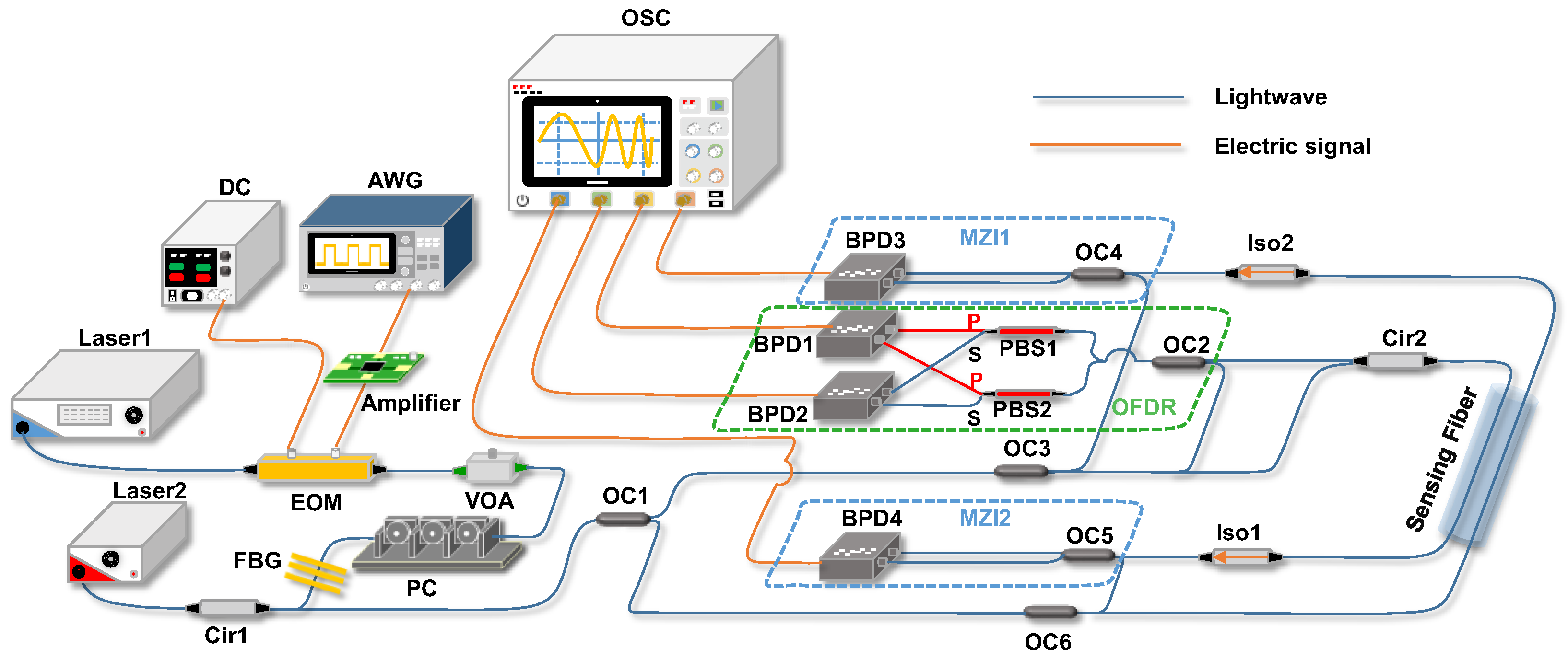
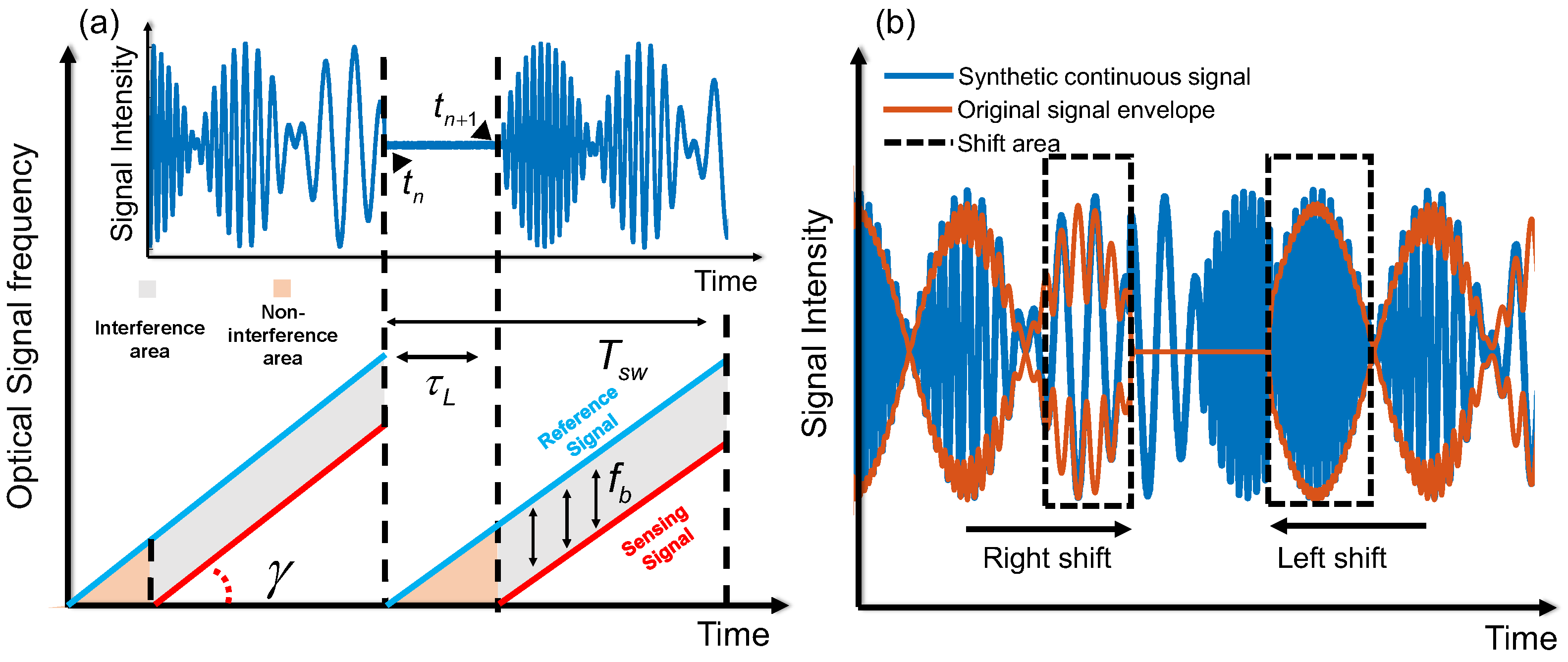
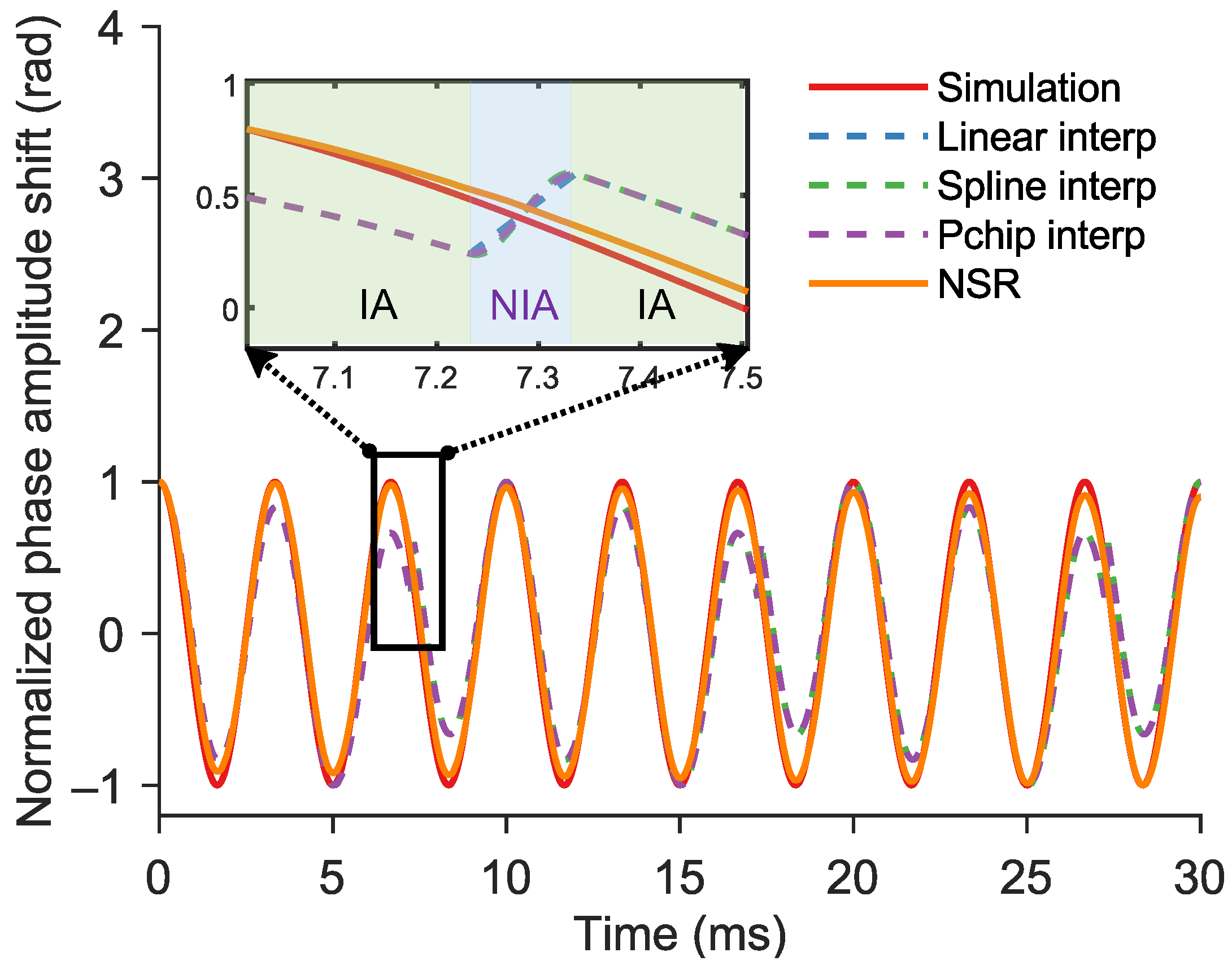
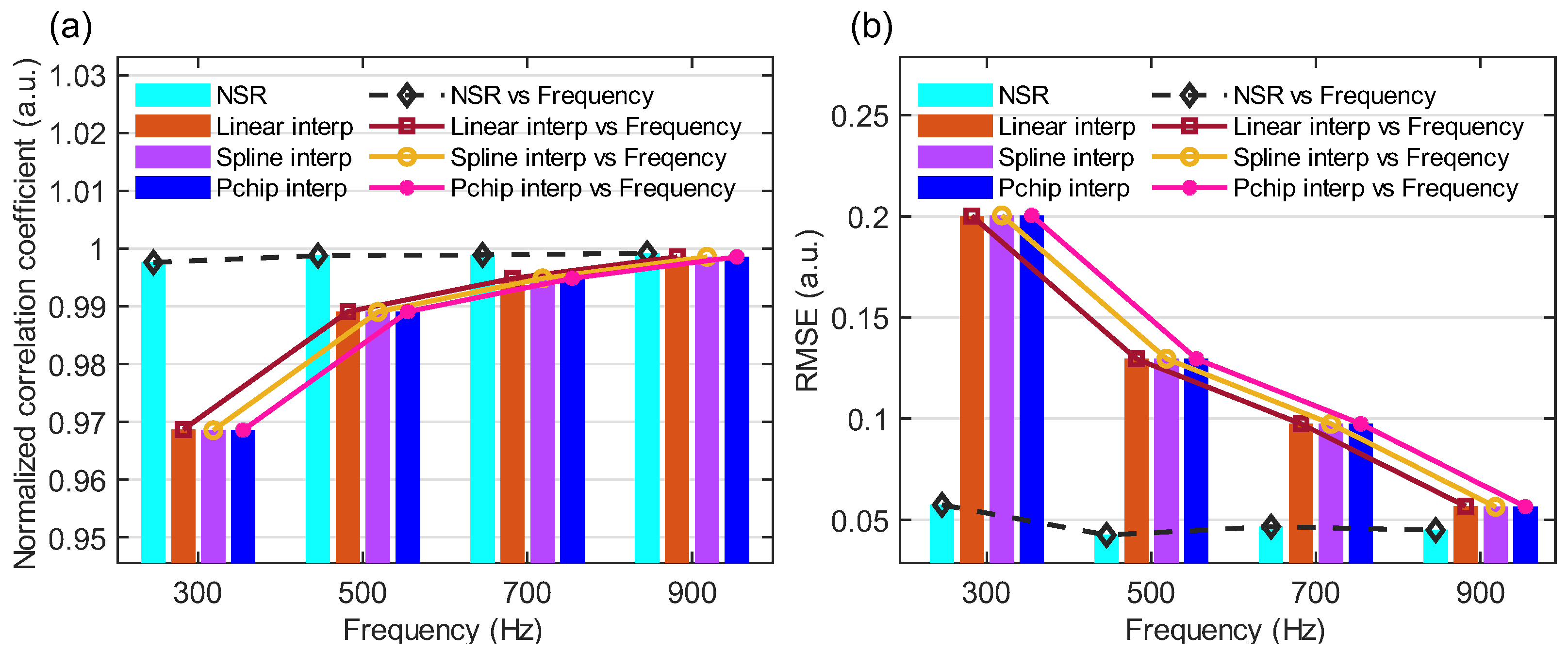

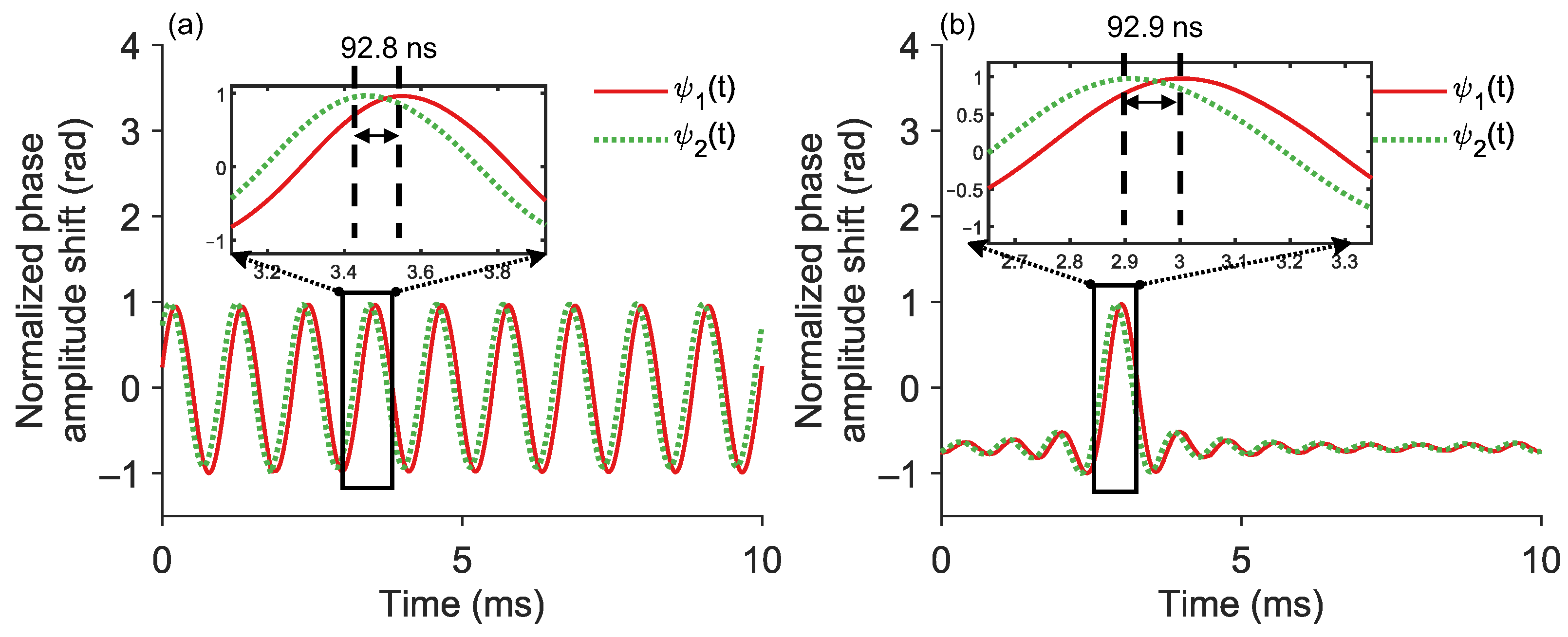
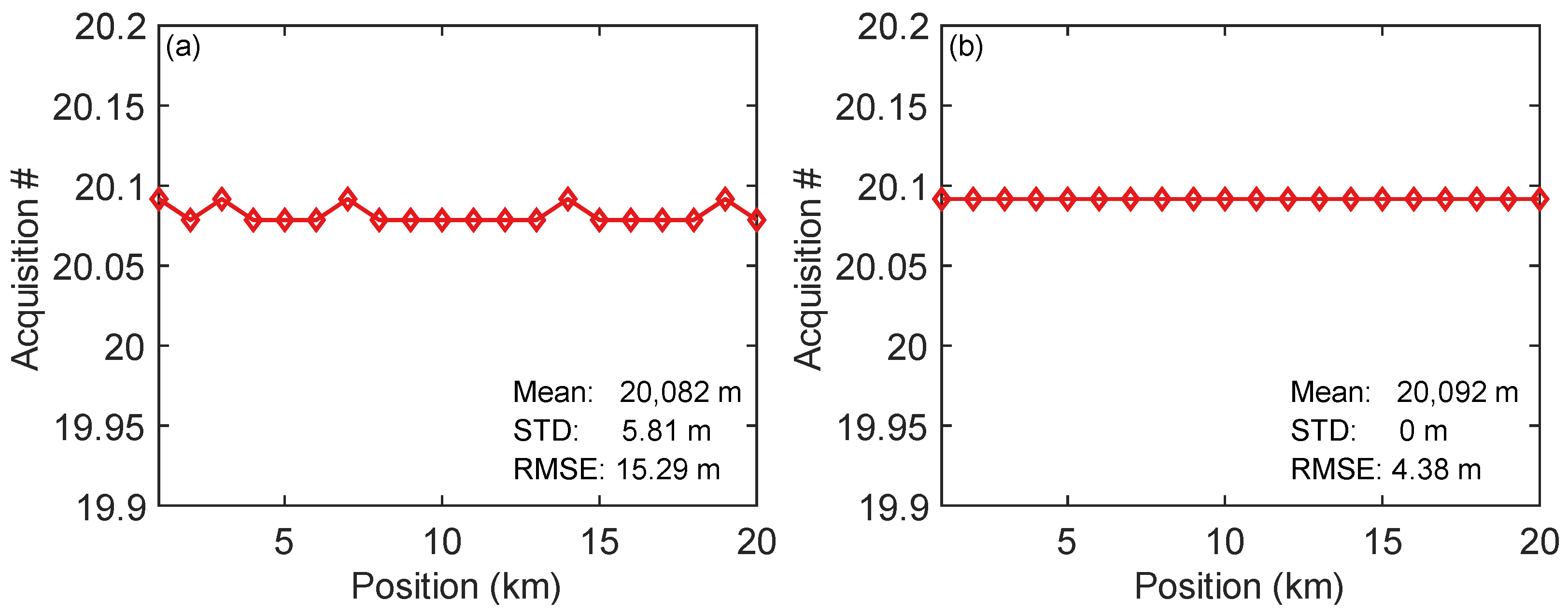

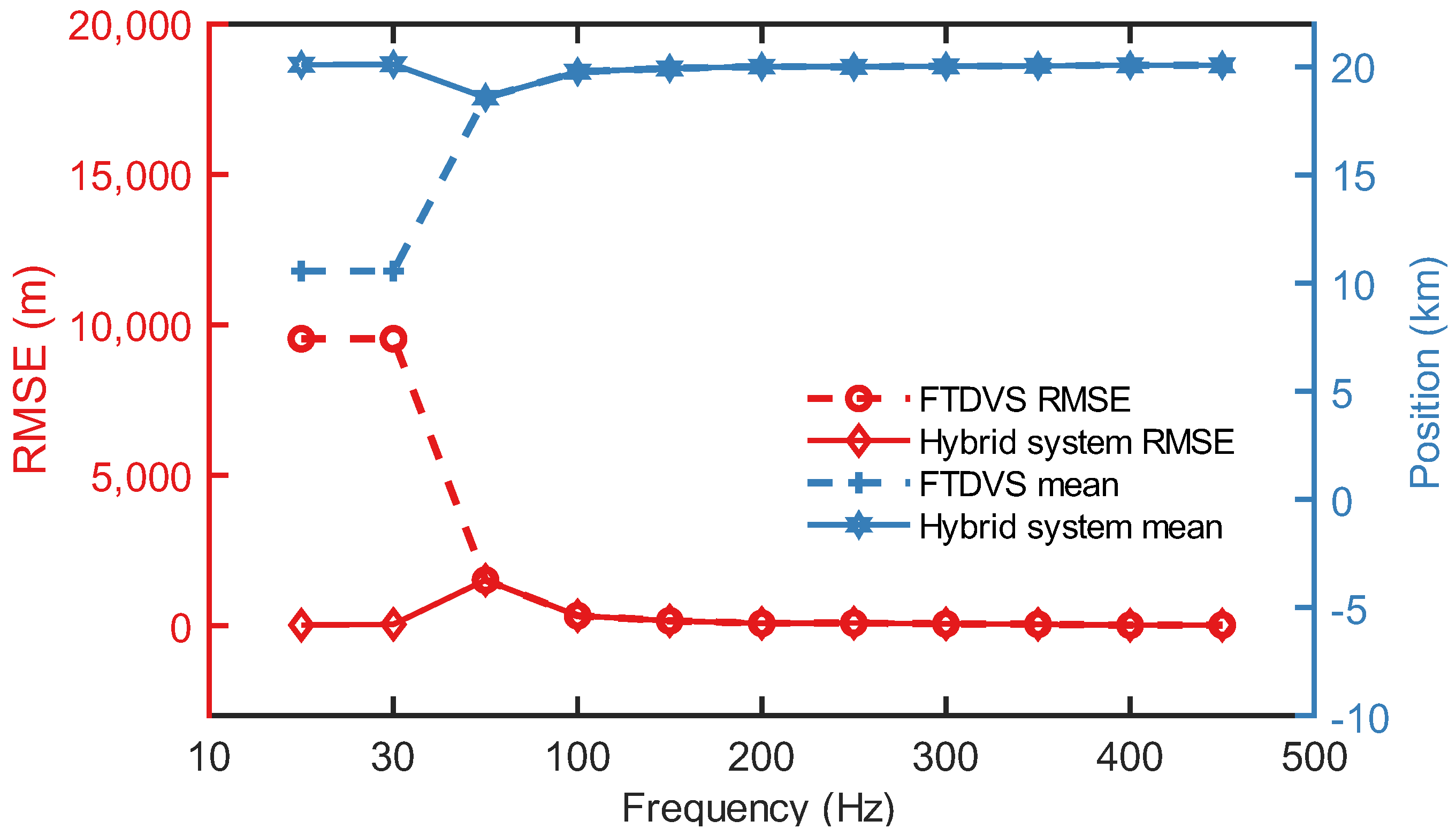
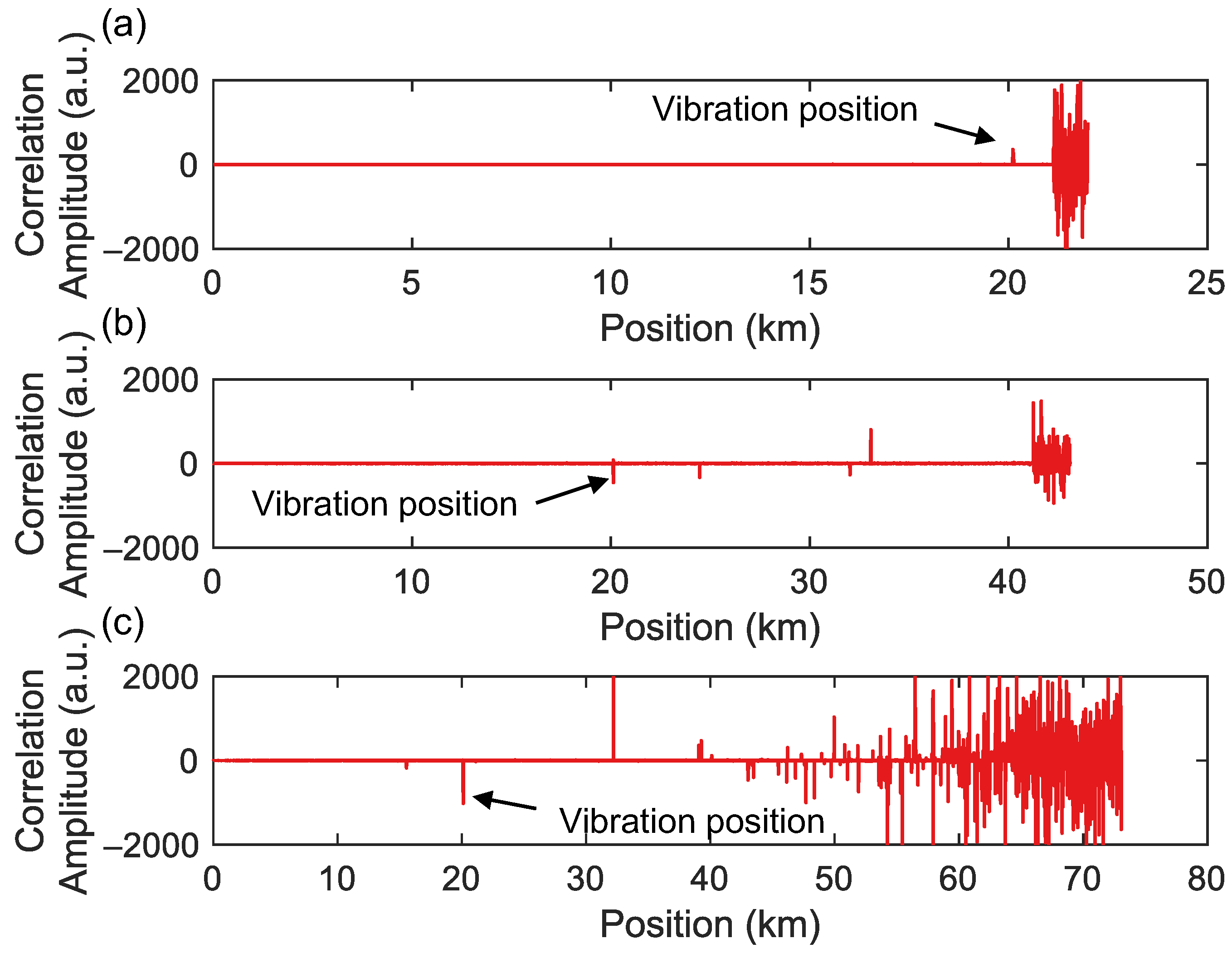

| Material Cost | Labor Cost | Shared or Not | |
|---|---|---|---|
| Laser source | High | Medium | Yes |
| Photodetectors | Medium | Low | No |
| Sensing fibers | Medium | High | Yes |
| Optical circulators | Low | Low | No |
| Optical couplers | Low | Low | No |
| Oscilloscope | Medium | Medium | Yes |
Disclaimer/Publisher’s Note: The statements, opinions and data contained in all publications are solely those of the individual author(s) and contributor(s) and not of MDPI and/or the editor(s). MDPI and/or the editor(s) disclaim responsibility for any injury to people or property resulting from any ideas, methods, instructions or products referred to in the content. |
© 2025 by the authors. Licensee MDPI, Basel, Switzerland. This article is an open access article distributed under the terms and conditions of the Creative Commons Attribution (CC BY) license (https://creativecommons.org/licenses/by/4.0/).
Share and Cite
Dai, S.; Zhong, H.; Rao, X.; Liu, J.; Fu, C.; Wang, Y.; Chen, G.Y. Hybrid-Mechanism Distributed Sensing Using Forward Transmission and Optical Frequency-Domain Reflectometry. Sensors 2025, 25, 6229. https://doi.org/10.3390/s25196229
Dai S, Zhong H, Rao X, Liu J, Fu C, Wang Y, Chen GY. Hybrid-Mechanism Distributed Sensing Using Forward Transmission and Optical Frequency-Domain Reflectometry. Sensors. 2025; 25(19):6229. https://doi.org/10.3390/s25196229
Chicago/Turabian StyleDai, Shangwei, Huajian Zhong, Xing Rao, Jun Liu, Cailing Fu, Yiping Wang, and George Y. Chen. 2025. "Hybrid-Mechanism Distributed Sensing Using Forward Transmission and Optical Frequency-Domain Reflectometry" Sensors 25, no. 19: 6229. https://doi.org/10.3390/s25196229
APA StyleDai, S., Zhong, H., Rao, X., Liu, J., Fu, C., Wang, Y., & Chen, G. Y. (2025). Hybrid-Mechanism Distributed Sensing Using Forward Transmission and Optical Frequency-Domain Reflectometry. Sensors, 25(19), 6229. https://doi.org/10.3390/s25196229









